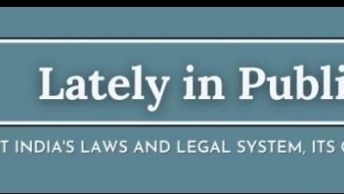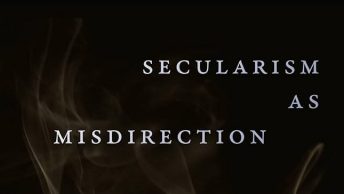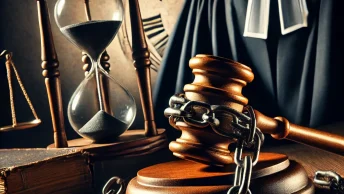September 26 was Solicitor General’s second day of submission before the Constitution Bench in Mandal II case. Mr.Vahanvati, to borrow the words of Mr.P.S.Krishnan, Advisor to the Minister for Education, effectively delivered the message to the Bench that it was fallacious to suggest that the Government is pursuing OBC reservations as part of vote-bank politics. Mr.Krishnan said: “At last the Government of India is fighting back. In no other case earlier in recent times, the Government of India has fought back with so much commitment, understanding and sensitivity.”
Mr.Krishnan should know better than anyone else. Mr.Krishnan came in for special mention by the SG during his submissions today, for the effort he put in to dig up facts relating to inclusion of various backward castes by the National Commission for Backward Classes. Mr.Krishnan had earlier served as the Member Secretary of the NCBC. The Bench took notice of Mr.Krishnan’s presence in the Court, while the CJI expressed his dismay that he quit the NCBC long back, thus suggesting that whatever be his contribution, it cannot now come to the aid of the NCBC.
That apart, today’s hearing was notable for the number of witticisms lightening the mood in the Court. It all started with the SG remarking that there were communities which refused to be labelled as OBCs. Justice Dalveer Bhandari called it ‘Pride vs. Pragmatism’, thus suggesting that those who wanted to be labelled as OBCs, swallowed their pride, in view of the economic benefits that reservation brought.
Justice Raveendran asked what was the explanation for the fact that many castes were included mechanically, without application of mind. He agreed that where there was opposition to an inclusion, the NCBC would have applied its mind, and given a good decision. But in most cases, the opposition to inclusion was not there. Hence, inclusion was done in a routine and cursory way. The SG, however, claimed that in all such cases, there was proper application of mind. There were 200 such communities which were included. They were backward for centuries, but not included earlier, because between the State Lists and the Central Lists there were differences.
Taking out such castes at random, for illustration, the SG said he was simply amazed by the rich diversity of Indian society. “It is fascinating” he said. The choice of castes by the SG for illustration, however, drew a lighter remark from Justice Raveendran who said he was perhaps choosing only those States from where the members of the Bench hailed! (except perhaps Justice Bhandari who felt left out!) A community which survived on sooth-saying as a calling, (a caste which grew bull trained to sooth-saying through gestures), folk entertainers, fortune tellers, professional mourners or even those castes centered around sycophancy as a traditional calling. Justice Pasayat remarked this is one calling (sycophancy) which many in the country would share, and would even be ranked as No.1 in the world!
The SG suggested that the Indra Sawhney Bench had upheld the current OBC lists. Under Paragraph 72 of the Judgment, it said caste can be the beginning. Once it is identified it can be included, it becomes includable in the SCBC list. Thus caste was the basis for inclusion in 14 States in 1993. There is no harm if the Centre uses the same basis for inclusion in the remaining states after that. There were 1432 castes in the State Lists; 2430 under the Mandal List; under the Common List, there were 1350. It is incorrect to say that subsequent inclusions were made whimsically, arbitrarily, and without any application of mind and for extraneous reasons, because in September 1993,a caste was identified as a backward class on the basis of traditional occupation. Caste was a starting point; all subsequent revisions followed the same basis. If traditional occupations, and hereditary callings were relevant for 14 States, extension of the same to other States cannot be condemned. To be precise, 297 new castes were included after 1993 under the Central List on the same principle.
Other significant points made by the SG are :
1. Exclusion of Creamy Layer under Article 16(4) was justified because posts were limited. Under Article 15(5), however, the seats were not limited, but increased under the impugned Act; hence, it was not necessary to exclude the creamy layer. The Notification -yet to be issued under the impugned Act – will not exclude the creamy layer. It is for the Supreme Court to decide whether the Government is right.
2. Balaji case represents old thinking insofar as Article 15(4) was read as Proviso and an exception to Article 15(1) and A.29(2). State of Kerala v. Thomas marks the new thinking: the Constitutional mandate to remove inequality flows from Article 14, 15 and 16. Article 29(2) is irrelevant.
3. Doctrines of strict scrutiny, narrow tailoring, suspect legislation do not apply to India, as our society, unlike America, is not race-based. Caste is not race.
4. Sarva Siksha Abhiyan has shown dramatic results (a claim disputed by Justice Pasayat), and Mr.P.P.Rao’s claim that Article 21 A is a dead letter is unacceptable.
Mr.Vahanvati will continue his arguments on September 27.






If the balaji case was that of 60s and the Thomas case was that of 70s. But in subsequent cases the limit of 50% was accepted by the Supreme Court.Correct ne if I am wrong. The Thomas case related to reservation in promotions. In the most recent case of reservation in
promotions the verdict had reservations in promotions had been
made possible subject to some conditions.
Do the state backward class commissions and the NCBC use the same yardstick to assess the backwardness of a community. If not which is better one. The case before the Court gives an opportunity for the Court to address many such issues. For example is there any provision that mandates that lists at state and centre will be revised at regular intervals.
SG is completely wrong in suggesting that doctrines of strict scrutiny, narrow tailoring, suspect legislation do not apply to India as it is not race-based. Any first year law student in the US would be able to explain to SG that “strict scrutiny, narrow tailoring, suspect legislation” and other such concepts are simply tools that the US Sup Ct uses to enhance its analysis of the equal protection and due process clauses. These analytical tools would be useful even if US was composed of one race – for instance, these tools are used in gender discrimination cases. I am not saying that these analytical tools are so effective that Indian constitutional law needs to be import them but the efficacy of these tools is a different issue altogether.
One think that struck me is old pattern of traipsing into irrelevant discourses on the general prevalence of the caste system whenever any specific act of reservation for OBCs is questioned. In the IS judgment, Justice Pandian uses one such outrageous example of a caste called “poorada vannans” found in Tirunelveli district. They are a caste of washermen, but hear this: they are not even allowed to see the daylight and expected to come out only after the sun sets. Outrageous ? Yes. Unfathamobly so.
But this caste would belong not to OBCs but to SCs. If someone could go back and verify on all the castes that SG tried to enumerate in his submission, it would be found that a vast majority of them belong to SCs, the constituitionality of which is rock solid and not before the court. So my crib is these arguments should have been shot down right then and there.
At the outset, let my clarify that the posts on the arguments before the Bench are meant to be informative only. To analyse and comment on them, probably we would need a complete picture, and access to the written submissions, and arguments by other counsel. However, responses are welcome, even if they are premature, they are bound to enlighten.
Response to RS: I think your queries might get answered as the hearing before the CB advances further.
to Anonymous: The SG while debunking the American doctrines, did refer to the Indian case law, which specifically said they don’t apply. (Saurabh Chaudri case for example. Again, I feel his written submissions should help us understand his arguments better.
to Srinivasan: I think your claim is factually incorrect. SG’s exposition of the OBCs during his arguments, are indeed OBCs. The criteria for inclusion in SC list is strictly untouchability. The OBCs might have suffered historical discrimination,but not untouchability, so as to merit their inclusion in SC list.
Historical discrimination is not a ground to determine OBCs. This fallacious contention was rejected outright even in Indra Sawhney.